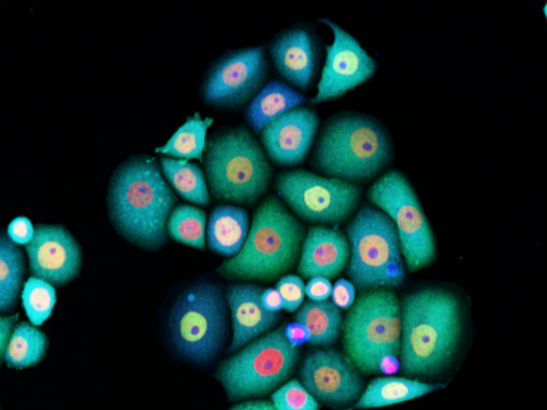-nfkb-(green)-and-a-reactive-oxygen-species-probe-(blue)-julia-sero-the-icr-2011.jpg?sfvrsn=5)
Researchers have identified a protein that controls how breast cancer cells spread around the body, according to a study published in Science Signaling today (Tuesday).
This study, funded by Cancer Research UK, sheds light on how cancer cells leave the blood vessels to travel to a new part of the body, using a technique that allows researchers to map how cancer cells interact and exchange information with cells that make up the blood vessels.
When tumour cells spread, they first enter the blood stream and grip onto the inner walls of blood vessels. The researchers, from The Institute of Cancer Research, London, and the University of Manchester, found that the cancer cells control a receptor protein called EPHA2 in order to push their way out of the vessels.
When cancer cells interact with the walls of the blood vessels, EPHA2 is activated and the tumour cells remain inside the blood vessels. When the EPHA2 is inactive, the tumour cells can push out and spread.
Dr Claus Jorgensen, who led the research at the ICR and at Cancer Research UK’s Manchester Institute at the University of Manchester, said: “The next step is to figure out how to keep this receptor switched on, so that the tumour cells can’t leave the blood vessels – stopping breast cancer spreading and making the disease easier to treat successfully.”
Nell Barrie, Cancer Research UK’s Senior Science Information Manager, said: “This is important research that teaches us more about how breast cancer cells move. Research like this is vital to help our understanding of how cancer spreads, and how to stop this from happening. More research is needed before this will benefit patients but it’s a jump in the right direction.”
